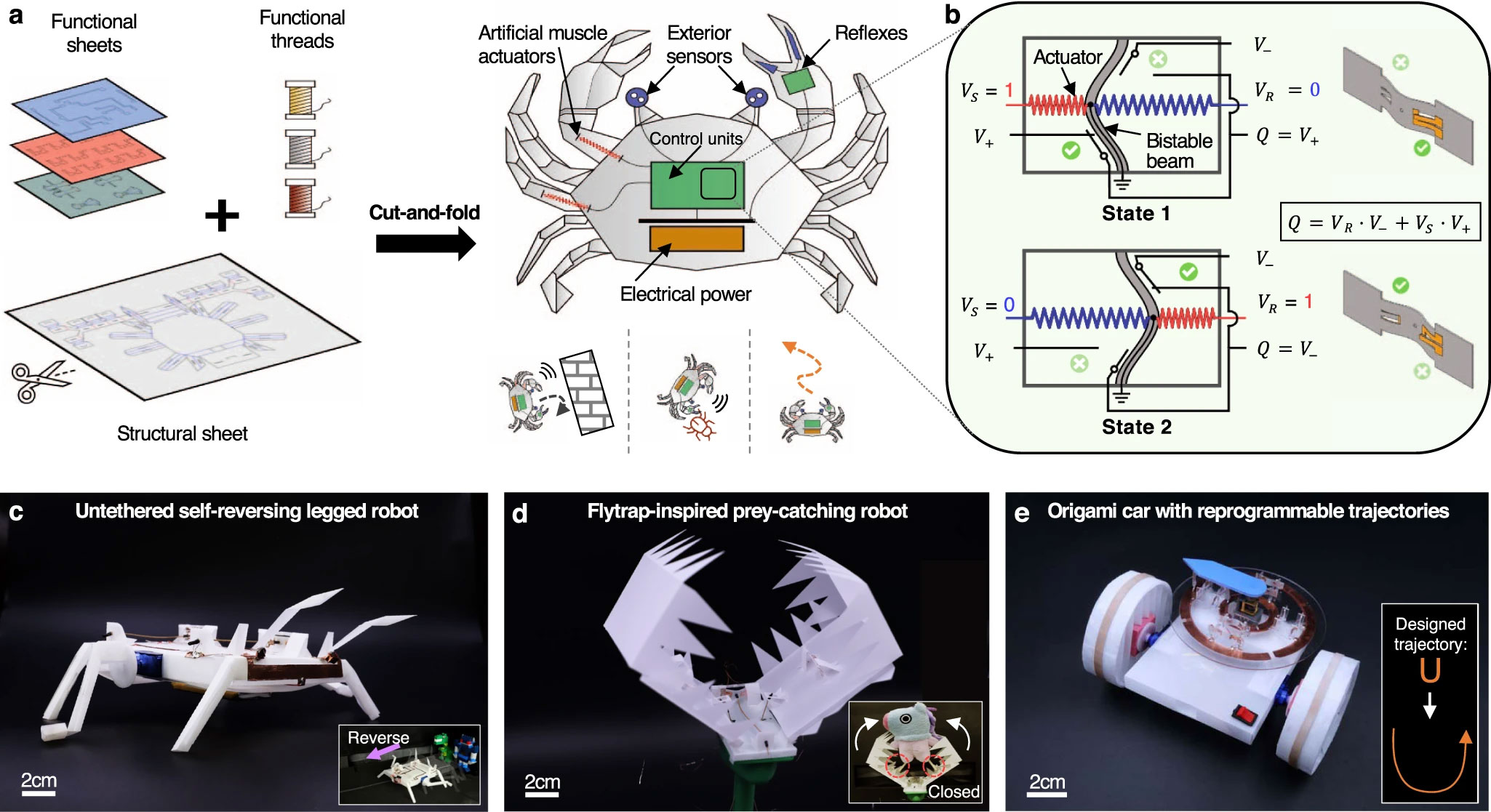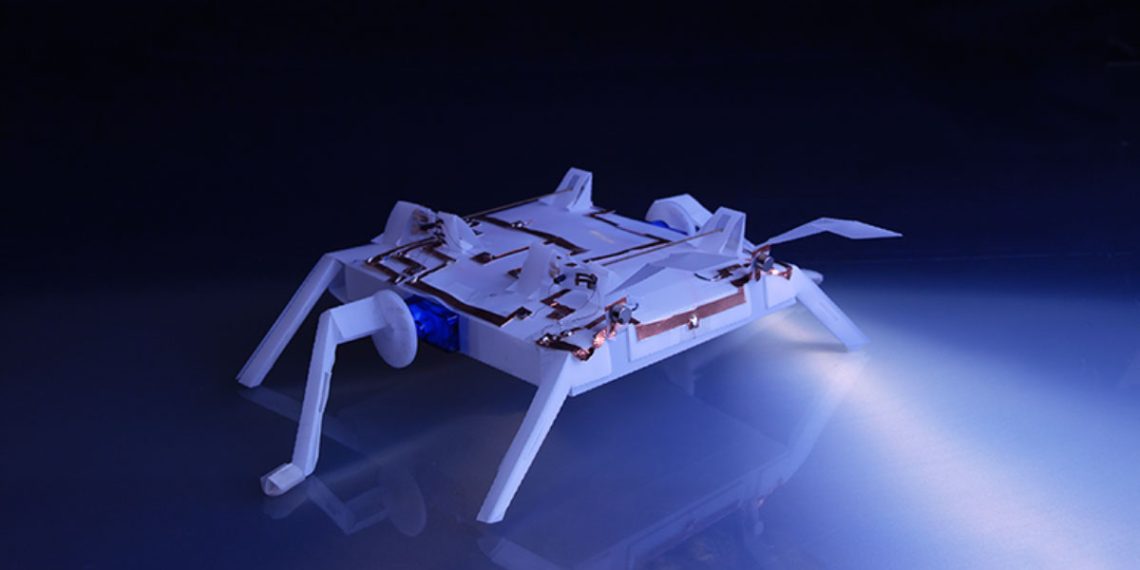Origami robotics is a growing field that merges the ancient art of paper folding with cutting-edge technology to create lightweight, flexible machines. These robots are simpler and more cost-effective to manufacture, and their compact design makes them ideal for storage and transportation.
UCLA’s OrigaMechs
Conventional Origami Robotics Challenges
Rigid computer chips
Traditional origami robots require rigid computer chips for advanced capabilities, such as sensing, analyzing, and adapting to the environment. These chips add extra weight to the delicate sheet materials and make folding more difficult.
Weight and folding limitations
As a result, semiconductor-based components must be added after the robot has been formed into its final shape, limiting the robot’s flexibility and increasing its overall weight.
Image source: DOI: 10.1038/s41467-023-37158-9

Related Posts
Best Crypto Exchange
UCLA’s Solution: Autonomous OrigaMechs
Conductive materials
The UCLA researchers have overcome these limitations by embedding flexible and electrically conductive materials into a pre-cut, thin polyester film sheet. This creates a system of information-processing units, or transistors, which can be integrated with sensors and actuators.
Information-processing units
By programming the sheet with simple computer analogical functions that emulate those of semiconductors, the researchers have enabled the OrigaMechs to sense, analyze, and act in response to their environments with precision.

OrigaMechs’ Computing Capabilities
Mechanical origami multiplexed switches
The OrigaMechs’ computing capabilities come from a combination of mechanical origami multiplexed switches created by the folds and programmed Boolean logic commands, such as “AND,” “OR,” and “NOT.” These switches enable a mechanism that selectively outputs electrical signals based on the variable pressure and heat input into the system.
Best Virtual Payment Card
Demonstrations of OrigaMechs
Insect-like walking robot
Venus flytrap-like robot
Another demonstration involved a Venus flytrap-like robot that envelops a “prey” when both of its jaw sensors detect an object.
Reprogrammable two-wheeled robot
Powering OrigaMechs
Tethered power source
While the robots were tethered to a power source for the demonstration, the researchers aim to eventually outfit the autonomous origami robots with an embedded energy storage system powered by thin-film lithium batteries.
Applications of OrigaMechs
Extreme environments
Dangerous or unpredictable scenarios
Origami robots could be especially useful in dangerous or unpredictable situations, such as during natural or manmade disasters.
Space exploration
The low-cost, lightweight, and simple-to-fabricate robots could also have potential applications in space exploration, where the ability to withstand extreme environments is crucial.
Benefits of OrigaMechs
Pre-assembled flat packaging
Pre-assembled robots built using the flexible cut-and-fold technique can be transported in flat packaging, resulting in significant space savings. This is particularly important in scenarios like space missions, where every cubic centimeter counts.
Low-cost and lightweight
The low-cost, lightweight, and easy-to-fabricate nature of OrigaMechs makes them ideal for a wide range of applications, from education to entertainment.
Potential educational tools and toys
Innovative educational tools, toys, and games could be developed using OrigaMechs, inspiring a new generation of learners to explore robotics and engineering.
If you are able, we kindly ask for your support of Logll Tech News today. We appreciate it.

Sergio Richi
Editor, Logll Tech News
Best Offer Today
Conclusion
Origami robotics, as demonstrated by the UCLA researchers and their OrigaMechs, has the potential to revolutionize the field of robotics. These lightweight, flexible, and cost-effective robots have the potential to work in extreme environments, assist during disasters, and even contribute to space exploration. The future of origami robotics is promising, with countless possible applications and innovations waiting to be discovered.











